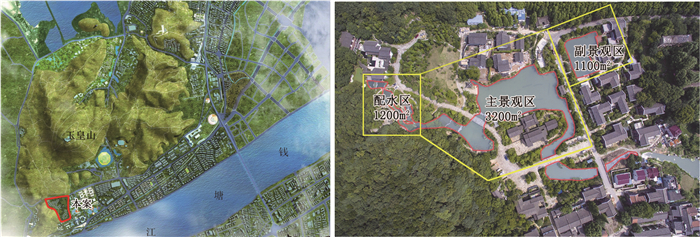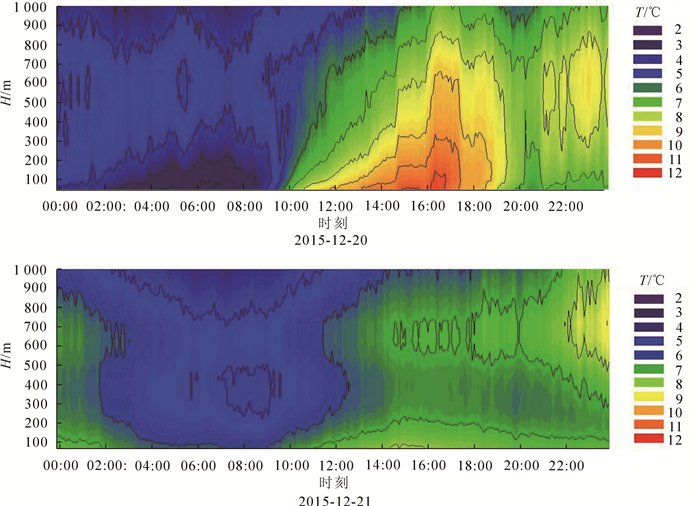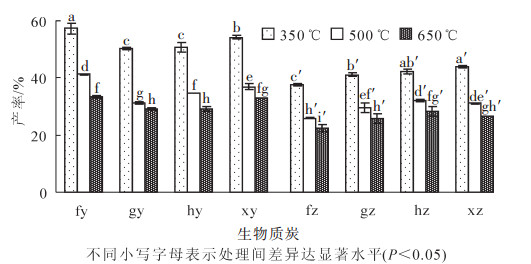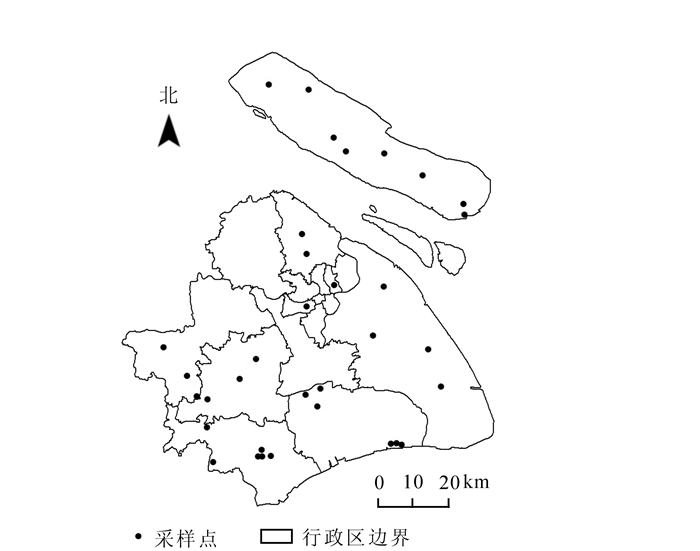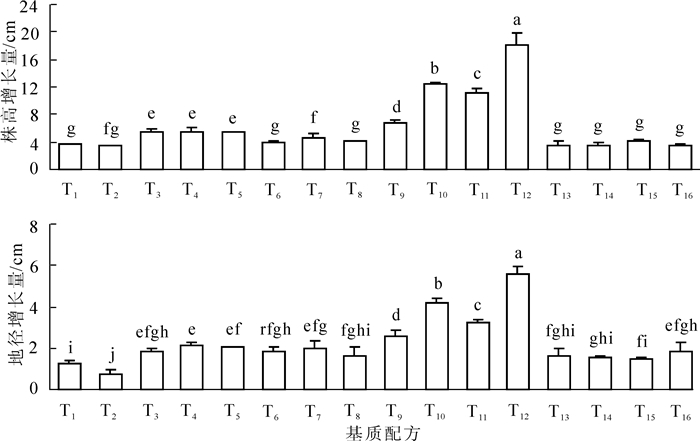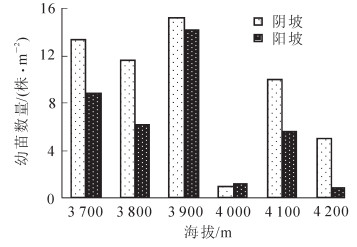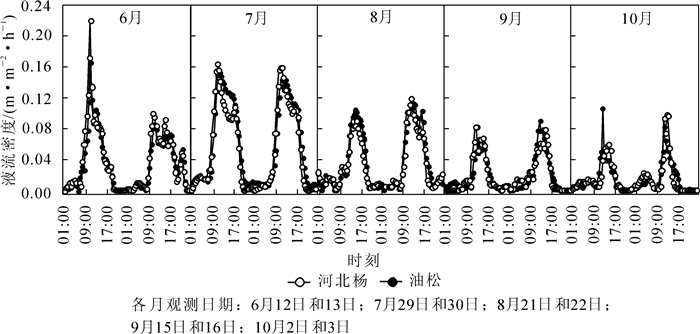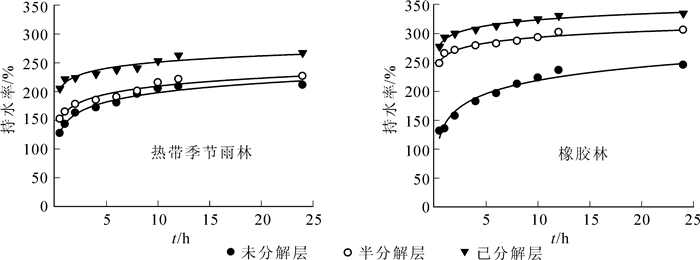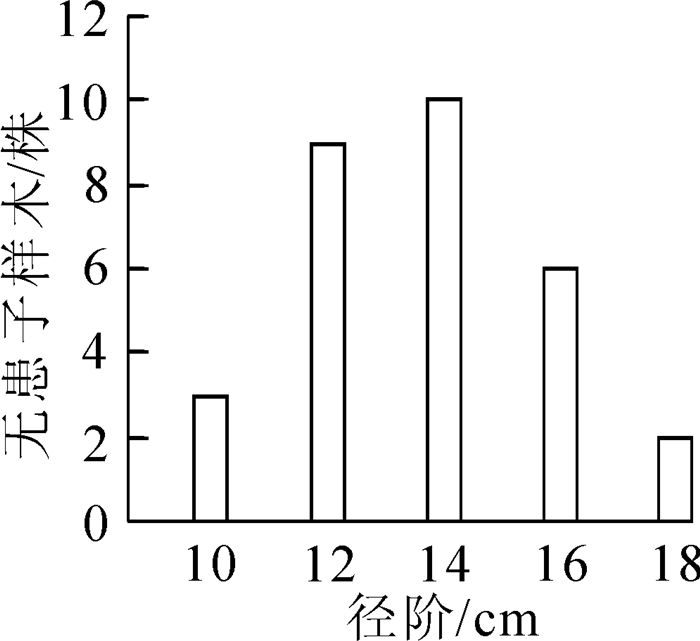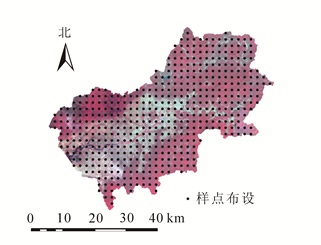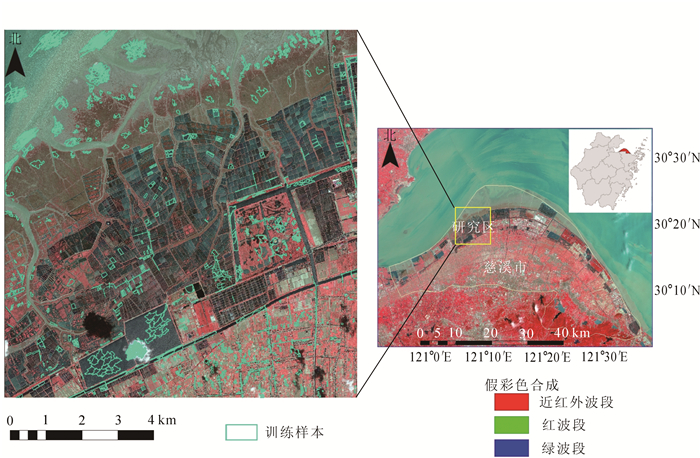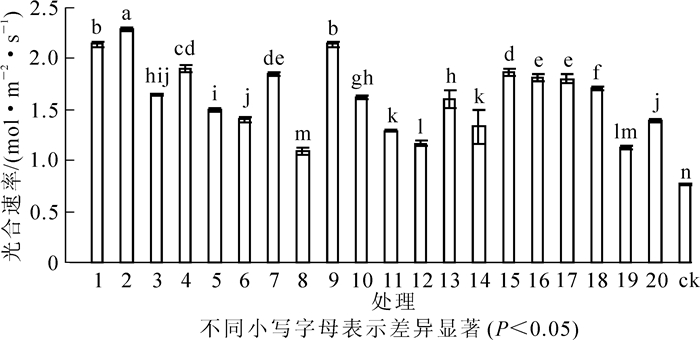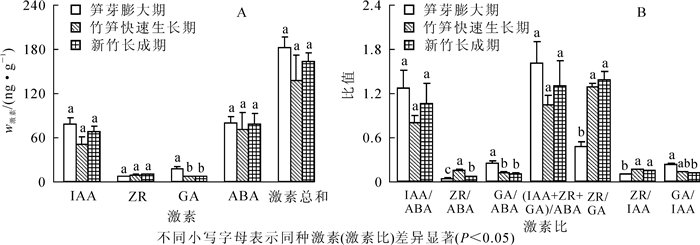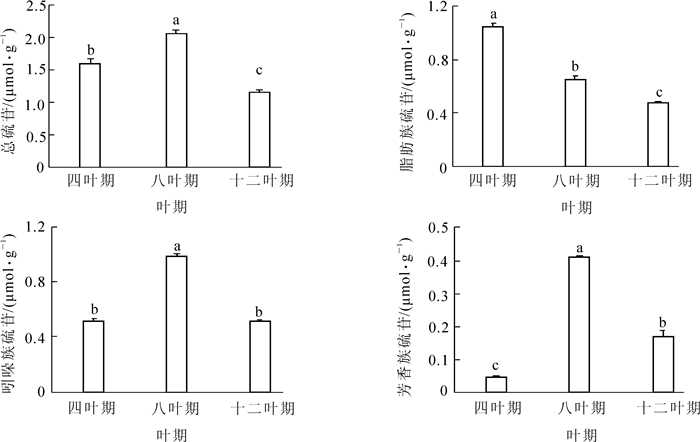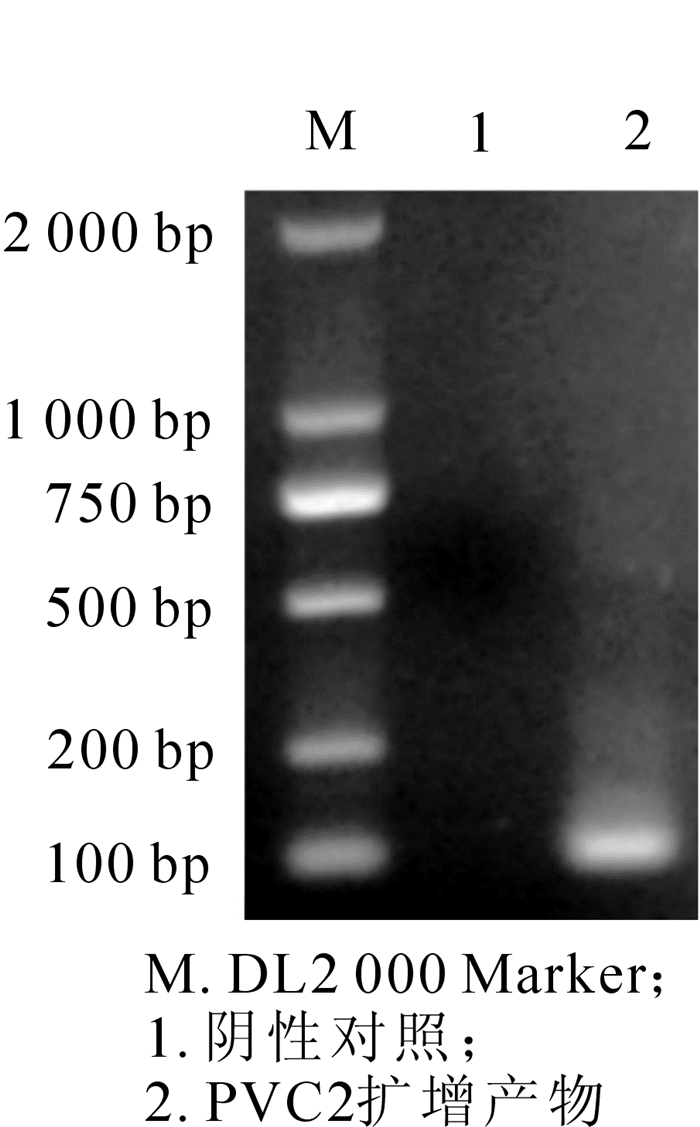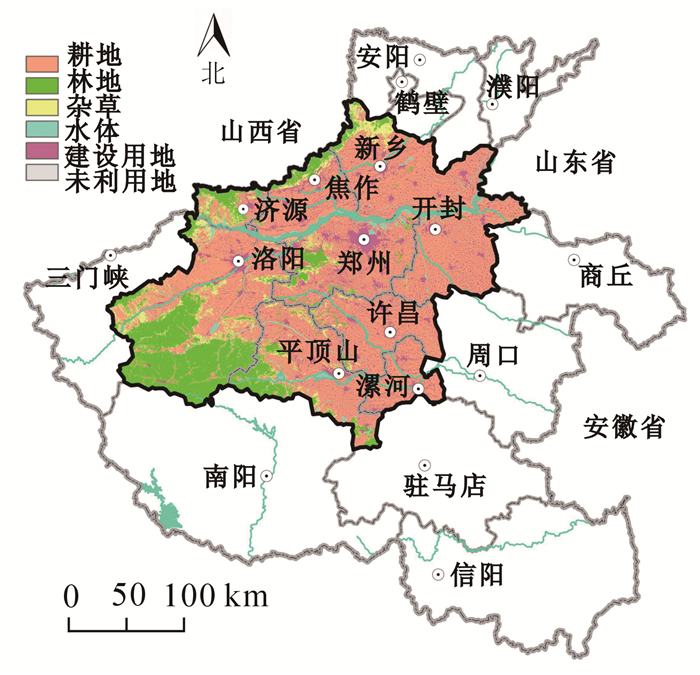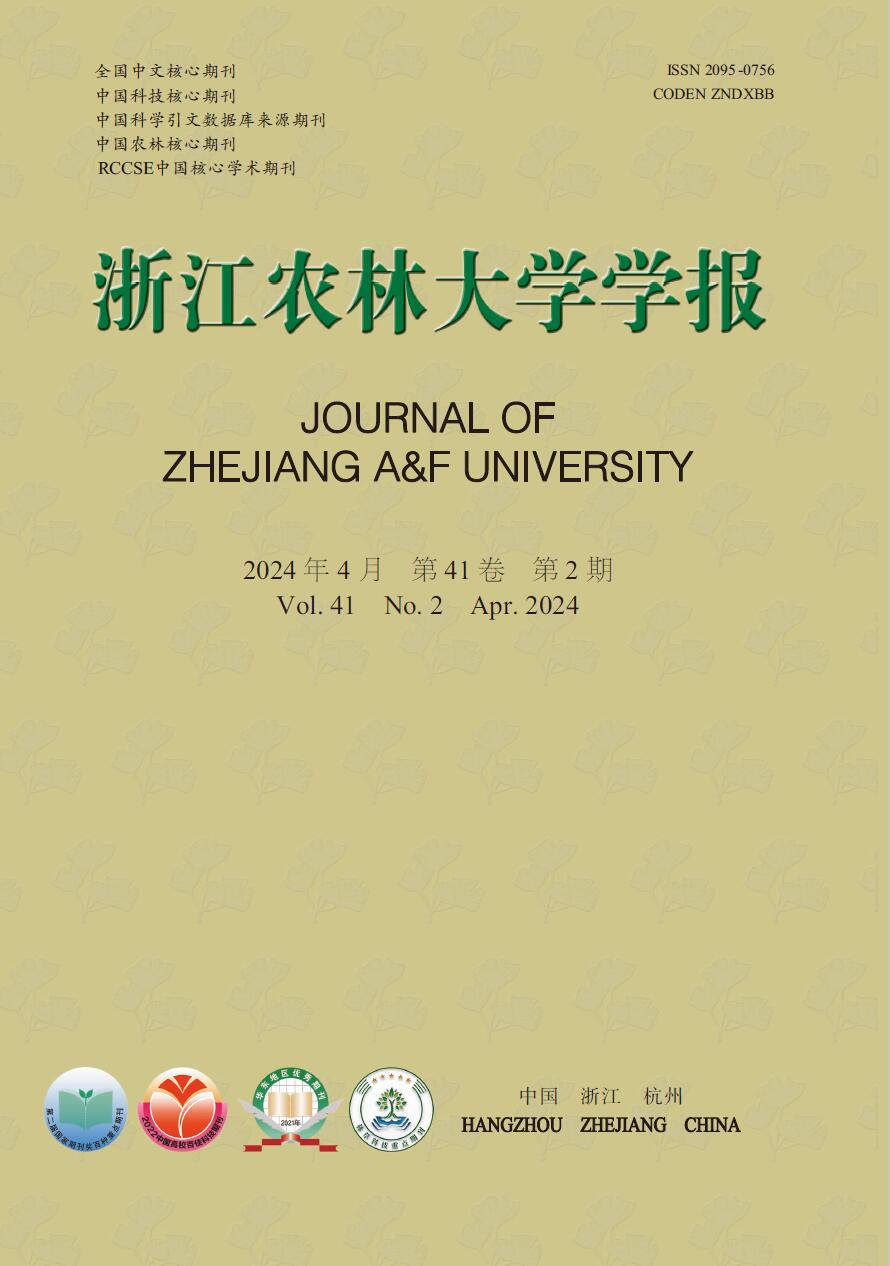2018 Vol. 35, No. 6
column
2018, 35(6): 987-996.
doi: 10.11833/j.issn.2095-0756.2018.06.001
Abstract:
Increased loading of nitrogen (N) from surface erosion and some sanitary drainage has led to degradation of landscape water bodies in Yuhuang Shannan Fund Town resulting in a negative impact on its landscape environment. This study explored total nitrogen (TN) removal prospects by addressing three research questions: (1) the amount of N the module could remove, (2) the N removal mechanisms in the process, and (3) the optimal length of the vertical ecological module. A vertical ecological module composed of an emergent plant module, a submerged plant module, and a biological stuffing module was used. Emergent plant modules (1.75 m×1.00 m×0.20 m) were planted with Typha orientalis, Canna indica, and Lythrum salicaria; submerged plant modules (1.75 m×1.00 m×0.50 m) were planted with Myriophyllum verticillatum, Potamogeton malaianus, and Elodea nuttallii; and biological stuffing modules (1.75 m×1.00 m×0.50 m) were planted with carbon fiber artificial plants and superfine fiber artificial plants, which combined into eighteen vertical ecological modules (1.85 m×1.10 m×1.40 m) in the order of Emergent plant modules, submerged plant modules and biological stuffing modules from water surface to underwater by orthogonal design. Results showed that the vertical ecological modules had favorable TN removal rates distributed between 73.58% and 97.61% with all being higher than the control group (30.87%). Except for M. verticillatum and P. malaianus, vegetation and biological stuffing selection significantly (P < 0.05) influenced N removal efficiency. Average TN concentrations at the outlet of the restoration modules, excluding the control, reached Level Ⅳ (1.50 mg·L-1) of the National Standard of Environmental Quality in China (GB 3838-2002). When the average TN removal rate was 85.00%, the top three TN removal rate modules had optimal lengths of 1.34 m (T. orientalis-E. nuttallii-carbon fiber artificial plants module), 1.44 m (C. indica-E. nuttallii-carbon fiber artificial plants module), and 1.64 m (T. orientalis-E. nuttallii-uperfine fiber artificial plants module). The study could provide scientific basis of technical design and engineerting application to improve the water quality of landscape water.
Increased loading of nitrogen (N) from surface erosion and some sanitary drainage has led to degradation of landscape water bodies in Yuhuang Shannan Fund Town resulting in a negative impact on its landscape environment. This study explored total nitrogen (TN) removal prospects by addressing three research questions: (1) the amount of N the module could remove, (2) the N removal mechanisms in the process, and (3) the optimal length of the vertical ecological module. A vertical ecological module composed of an emergent plant module, a submerged plant module, and a biological stuffing module was used. Emergent plant modules (1.75 m×1.00 m×0.20 m) were planted with Typha orientalis, Canna indica, and Lythrum salicaria; submerged plant modules (1.75 m×1.00 m×0.50 m) were planted with Myriophyllum verticillatum, Potamogeton malaianus, and Elodea nuttallii; and biological stuffing modules (1.75 m×1.00 m×0.50 m) were planted with carbon fiber artificial plants and superfine fiber artificial plants, which combined into eighteen vertical ecological modules (1.85 m×1.10 m×1.40 m) in the order of Emergent plant modules, submerged plant modules and biological stuffing modules from water surface to underwater by orthogonal design. Results showed that the vertical ecological modules had favorable TN removal rates distributed between 73.58% and 97.61% with all being higher than the control group (30.87%). Except for M. verticillatum and P. malaianus, vegetation and biological stuffing selection significantly (P < 0.05) influenced N removal efficiency. Average TN concentrations at the outlet of the restoration modules, excluding the control, reached Level Ⅳ (1.50 mg·L-1) of the National Standard of Environmental Quality in China (GB 3838-2002). When the average TN removal rate was 85.00%, the top three TN removal rate modules had optimal lengths of 1.34 m (T. orientalis-E. nuttallii-carbon fiber artificial plants module), 1.44 m (C. indica-E. nuttallii-carbon fiber artificial plants module), and 1.64 m (T. orientalis-E. nuttallii-uperfine fiber artificial plants module). The study could provide scientific basis of technical design and engineerting application to improve the water quality of landscape water.
2018, 35(6): 997-1006.
doi: 10.11833/j.issn.2095-0756.2018.06.002
Abstract:
To determine the atmospheric temperature and pollutant characteristics during periods of heavy pollution, a statistical analysis using data collected by MTP5 Temperature Profiler and Air Quality Monitoring System was made during serious air pollution incidents in Lin'an over the three years from 2015-2018. A correlation analysis was also conducted, which used statistical time series analysis. Results of the analysis showed that (1) temperature inversions were concentrated in the evening and early morning. When temperature differences between early morning and evening were over 7℃ all day, daytime temperature inversions did not appear. Inversion heights were usually 400 m at the base and 700 m at the top. (2) As for inversion thickness, the maximum was 700 m with an average of 359.9 m. The maximum temperature difference of an inversion was 3.7℃ with average of 0.7℃. The range of temperature had a highly significant correlation with inversion thickness (R2=0.914, P < 0.01). (3) Particulate matter PM2.5 and PM10 were the major pollutants. The concentration of PM2.5 exceeded 115 μg·m-3 and PM10 exceeded 250 μg·m-3. Four gases, SO2, CO, O3, and NO2, always had good quality during the pollution occurrences. (4) The base height of the inversion had highly significant correlations with PM2.5 (P < 0.01) and PM10 (P < 0.01) concentrations; however, no significant correlations were found for the top of the inversion. Thus, the cause of pollution was determined to be a decrease in the temperature inversion and the mass accumulation of particulate matter in the vertical direction.
To determine the atmospheric temperature and pollutant characteristics during periods of heavy pollution, a statistical analysis using data collected by MTP5 Temperature Profiler and Air Quality Monitoring System was made during serious air pollution incidents in Lin'an over the three years from 2015-2018. A correlation analysis was also conducted, which used statistical time series analysis. Results of the analysis showed that (1) temperature inversions were concentrated in the evening and early morning. When temperature differences between early morning and evening were over 7℃ all day, daytime temperature inversions did not appear. Inversion heights were usually 400 m at the base and 700 m at the top. (2) As for inversion thickness, the maximum was 700 m with an average of 359.9 m. The maximum temperature difference of an inversion was 3.7℃ with average of 0.7℃. The range of temperature had a highly significant correlation with inversion thickness (R2=0.914, P < 0.01). (3) Particulate matter PM2.5 and PM10 were the major pollutants. The concentration of PM2.5 exceeded 115 μg·m-3 and PM10 exceeded 250 μg·m-3. Four gases, SO2, CO, O3, and NO2, always had good quality during the pollution occurrences. (4) The base height of the inversion had highly significant correlations with PM2.5 (P < 0.01) and PM10 (P < 0.01) concentrations; however, no significant correlations were found for the top of the inversion. Thus, the cause of pollution was determined to be a decrease in the temperature inversion and the mass accumulation of particulate matter in the vertical direction.
2018, 35(6): 1007-1016.
doi: 10.11833/j.issn.2095-0756.2018.06.003
Abstract:
To counter inadequate disposal of green wastes resulting in nutrient loss and environmental pollution, four types of woody green wastes (Platanus orientalis, Osmanthus fragrans, Photiniax fraseri, and Cinnamomum camphora) were collected to determine the effects of pyrolysis temperatures (350, 500, and 650℃) on yields and physicochemical properties of resulting biochars. Results showed that biochar yield decreased with an increase of pyrolysis temperature, especially in the range of 350-500℃. The ash content of biomass materials had a remarkable effect on the yield of biochars with the yield of Platanus orientalis leaf biochar being the highest and branch biochar yield the lowest. As pyrolysis temperature increased, biochar aromaticity increased and hydrophilicity and polarity decreased. Branch biochars of Photiniax fraseri and P. orientalis pyrolyzed at 650℃ had higher aromaticity than the other biochars, and P. orientalis leaf biochars prepared at 350℃ had the highest hydrophilicity and polarity. Total N from Osmanthus fragrans and Cinnamomum camphora leaf biochar was higher than in other biochars. Total S content of leaf biochar was higher than branch biochar. Both types and quantities of functional groups on the surface of biochars decreased with the increase of pyrolysis temperature, although functional groups were still observed on the surface of P. fraseri leaf biochars pyrolyzed at 650℃. Scanning electron microscopy and X-ray diffraction analysis showed that compared to other biochars, P. orientalis and C. camphora branch biochars had greater porosity, and P. fraseri leaf biochar had higher concentrations of P, Mg, K, and Ca. In conclusion, characteristics of these biochars, derived from woody green waste, mainly affected by raw biomass materials and pyrolysis temperatures, could provide references for utilization of woody green wastes through pyrolysis on a commercial scale as well as practical implications for use with soil amendments, carbon sequestration, emission reduction, and plant growth promotion.
To counter inadequate disposal of green wastes resulting in nutrient loss and environmental pollution, four types of woody green wastes (Platanus orientalis, Osmanthus fragrans, Photiniax fraseri, and Cinnamomum camphora) were collected to determine the effects of pyrolysis temperatures (350, 500, and 650℃) on yields and physicochemical properties of resulting biochars. Results showed that biochar yield decreased with an increase of pyrolysis temperature, especially in the range of 350-500℃. The ash content of biomass materials had a remarkable effect on the yield of biochars with the yield of Platanus orientalis leaf biochar being the highest and branch biochar yield the lowest. As pyrolysis temperature increased, biochar aromaticity increased and hydrophilicity and polarity decreased. Branch biochars of Photiniax fraseri and P. orientalis pyrolyzed at 650℃ had higher aromaticity than the other biochars, and P. orientalis leaf biochars prepared at 350℃ had the highest hydrophilicity and polarity. Total N from Osmanthus fragrans and Cinnamomum camphora leaf biochar was higher than in other biochars. Total S content of leaf biochar was higher than branch biochar. Both types and quantities of functional groups on the surface of biochars decreased with the increase of pyrolysis temperature, although functional groups were still observed on the surface of P. fraseri leaf biochars pyrolyzed at 650℃. Scanning electron microscopy and X-ray diffraction analysis showed that compared to other biochars, P. orientalis and C. camphora branch biochars had greater porosity, and P. fraseri leaf biochar had higher concentrations of P, Mg, K, and Ca. In conclusion, characteristics of these biochars, derived from woody green waste, mainly affected by raw biomass materials and pyrolysis temperatures, could provide references for utilization of woody green wastes through pyrolysis on a commercial scale as well as practical implications for use with soil amendments, carbon sequestration, emission reduction, and plant growth promotion.
2018, 35(6): 1017-1026.
doi: 10.11833/j.issn.2095-0756.2018.06.004
Abstract:
Forest plantations are an important component of urban green infrastructure with soil being fundamental for healthy and sustainable development of forest plantations. To understand the soil physical and chemical properties and their connection to plant community characteristics, thirty four 25 m×25 m plots from five main forest plantations types in Shanghai were selected. Each soil sample was a mixture of three sub-samples taken from each layers in 1 m×1 m×1 m soil profile, and plant community characteristics were surveyed at the same time. One-way analysis of variance was applied to test the differences of soil properties (SPSS ver. 23). Pearson's correlation analysis was performed to assess the relationships between soil properties and community characteristics with software R, ver. 3.2.0. Results showed that (1) soil bulk density was between 1.07-1.67 g·cm-3. Most of the soils were alkaline to weakly acidic (soil pH range of 5.7-8.3). The soil electric conductivity range of 0.03-0.40 mS·cm-1, and available N range of 5.4-183.4 mg·kg-1, available P range of 1.4-80.5 mg·kg-1, and organic matter range of 3.33-42.88 g·kg-1. Soil pH, available N, and organic matter presented regular dynamics and significant differences between different soil layers (P < 0.05). Soil bulk density, available P, and electric conductivity had no large change between different soil layers. (2) At 0-30 cm soil depth, organic matter was significant related to soil bulk density, soil pH, available N, and available P (P < 0.05). Available N and pH were also significant related (P < 0.05). (3) At 0-10 cm soil layers, tree canopy density had significant negative relationship with soil electric conductivity (P < 0.05); available N significant had positive relationship with diameter at breast high and herbaceous layer cover (P < 0.01); organic matter had significant positive relationship with diameter at breast high (P < 0.05) and herbaceous layer cover (P < 0.01). In conclusion, with rapid urbanization and intensive human activities, the complexity and disparity of forest plantations types should be considered when making specific management measures, rather than simply being based on previous study results, thereby promoting a healthy and sustainable development of forest plantations.
Forest plantations are an important component of urban green infrastructure with soil being fundamental for healthy and sustainable development of forest plantations. To understand the soil physical and chemical properties and their connection to plant community characteristics, thirty four 25 m×25 m plots from five main forest plantations types in Shanghai were selected. Each soil sample was a mixture of three sub-samples taken from each layers in 1 m×1 m×1 m soil profile, and plant community characteristics were surveyed at the same time. One-way analysis of variance was applied to test the differences of soil properties (SPSS ver. 23). Pearson's correlation analysis was performed to assess the relationships between soil properties and community characteristics with software R, ver. 3.2.0. Results showed that (1) soil bulk density was between 1.07-1.67 g·cm-3. Most of the soils were alkaline to weakly acidic (soil pH range of 5.7-8.3). The soil electric conductivity range of 0.03-0.40 mS·cm-1, and available N range of 5.4-183.4 mg·kg-1, available P range of 1.4-80.5 mg·kg-1, and organic matter range of 3.33-42.88 g·kg-1. Soil pH, available N, and organic matter presented regular dynamics and significant differences between different soil layers (P < 0.05). Soil bulk density, available P, and electric conductivity had no large change between different soil layers. (2) At 0-30 cm soil depth, organic matter was significant related to soil bulk density, soil pH, available N, and available P (P < 0.05). Available N and pH were also significant related (P < 0.05). (3) At 0-10 cm soil layers, tree canopy density had significant negative relationship with soil electric conductivity (P < 0.05); available N significant had positive relationship with diameter at breast high and herbaceous layer cover (P < 0.01); organic matter had significant positive relationship with diameter at breast high (P < 0.05) and herbaceous layer cover (P < 0.01). In conclusion, with rapid urbanization and intensive human activities, the complexity and disparity of forest plantations types should be considered when making specific management measures, rather than simply being based on previous study results, thereby promoting a healthy and sustainable development of forest plantations.
2018, 35(6): 1027-1037.
doi: 10.11833/j.issn.2095-0756.2018.06.005
Abstract:
To promote the utilization of forest wastes and reduce the exploitation of peat, a seedling test on Tectona grandis was conducted with the main raw materials of forest wastes as the seedling substrate. Taking wood fiber (WB), sawdust (SD), coir dust (CD), and retted bark (RB) as main raw materials and peat (PT), yellow soil (YS), perlite (PL), vermiculite (VC), and burned soil (BS) as auxiliary materials, 16 different matrix formulations were mixed with different volume ratios. The control (T1) formula was YS:SD:BS=6:3:1. Physicochemical properties of the substrates and their effects on the growth and physiological status of T. grandis seedlings were studied using the subjection function method to evaluate the effect of each substrate on seedling growth. Then, the best suitable matrix formulation for seedling growth was screened out. Results showed significant differences (P < 0.05) between indicators of different substrates. Of the sixteen kinds of forestry waste formulation substrates, bulk density was 0.1-0.8 g·cm-3, total porosity was 35.87%-63.35%, and capillary porosity was 24.78%-53.05%; pH was 5.29-7.43. Compared to the control, available N, available P, available K, EC, and aeration porosity were higher or significantly higher (P < 0.05); bulk density was significantly lower (P < 0.05). Differences among the indexes included T10, T11 and T12. For height growth and increment of soil diameter in the formulation matrix, main root length, the number of lateral roots per plant, the leaf area per plant, leaf stem and leaf dry weight, root dry weight, seedling quality index, and total chlorophyll were significantly higher (P < 0.05) than the control group. The comprehensive evaluation results showed that the comprehensive evaluation indexes of T10, T11 and T12 are 0.42, 0.42, and 0.56 were significantly (P < 0.05) higher than those of the control group (0.22). Thus, to reduce the use of peat, T10 and T11 were recommended as the best seedling substrates for T. grandis.
To promote the utilization of forest wastes and reduce the exploitation of peat, a seedling test on Tectona grandis was conducted with the main raw materials of forest wastes as the seedling substrate. Taking wood fiber (WB), sawdust (SD), coir dust (CD), and retted bark (RB) as main raw materials and peat (PT), yellow soil (YS), perlite (PL), vermiculite (VC), and burned soil (BS) as auxiliary materials, 16 different matrix formulations were mixed with different volume ratios. The control (T1) formula was YS:SD:BS=6:3:1. Physicochemical properties of the substrates and their effects on the growth and physiological status of T. grandis seedlings were studied using the subjection function method to evaluate the effect of each substrate on seedling growth. Then, the best suitable matrix formulation for seedling growth was screened out. Results showed significant differences (P < 0.05) between indicators of different substrates. Of the sixteen kinds of forestry waste formulation substrates, bulk density was 0.1-0.8 g·cm-3, total porosity was 35.87%-63.35%, and capillary porosity was 24.78%-53.05%; pH was 5.29-7.43. Compared to the control, available N, available P, available K, EC, and aeration porosity were higher or significantly higher (P < 0.05); bulk density was significantly lower (P < 0.05). Differences among the indexes included T10, T11 and T12. For height growth and increment of soil diameter in the formulation matrix, main root length, the number of lateral roots per plant, the leaf area per plant, leaf stem and leaf dry weight, root dry weight, seedling quality index, and total chlorophyll were significantly higher (P < 0.05) than the control group. The comprehensive evaluation results showed that the comprehensive evaluation indexes of T10, T11 and T12 are 0.42, 0.42, and 0.56 were significantly (P < 0.05) higher than those of the control group (0.22). Thus, to reduce the use of peat, T10 and T11 were recommended as the best seedling substrates for T. grandis.
2018, 35(6): 1038-1044.
doi: 10.11833/j.issn.2095-0756.2018.06.006
Abstract:
This study lays the foundation for improving the natural regeneration effect of Abies georgei var. smithii. Using standard field observations, the main influencing factors on natural regeneration of Abies georgei var. smithii including elevation, slope, seed weight, and forest gaps, were analyzed. A correlation analysis of seedling numbers versus canopy density, length of seeds with wings, seed weight, thickness of the moss layer, and thickness of litter was conducted. Results showed that because of differences in elevation and slope, the length of seeds with wings, length of seeds without wings, width of seeds, and thickness of seeds were different, especially length of seeds with wings in shady and sunny conditions. In shade, the 1000-grain weight was from 3.32 to 12.86 g; whereas, in sunshine, the 1000-grain weight was from 3.72 to 14.68 g. Seed quality in sunshine was better than the shade. The 1000-grain weights in the shade and sunshine at 3 800 and 3 900 m were very different. In the shade and sunshine as altitude increased, the length of seeds with wings, length of seeds without wings, width of seeds, thickness of seeds, and 1000-grain weight all increased at first and then decreased; the number of seedlings was about same. The gap study showed gap > forest edge > forest. Canopy density (r=0.773), length of seeds with wings (r=0.860), seed weight (r=0.643), and thickness of litter (r=0.833) showed a significant positive correlation; thickness of moss layer (r=0.919) showed a highly significant positive correlation. Thus, these factors could be beneficial to natural regeneration of Abies georgei var. smithii in plateau mountain forests, and this study has important practical implications for promoting regeneration and recovery with thickness of the moss layer being the most important factor.
This study lays the foundation for improving the natural regeneration effect of Abies georgei var. smithii. Using standard field observations, the main influencing factors on natural regeneration of Abies georgei var. smithii including elevation, slope, seed weight, and forest gaps, were analyzed. A correlation analysis of seedling numbers versus canopy density, length of seeds with wings, seed weight, thickness of the moss layer, and thickness of litter was conducted. Results showed that because of differences in elevation and slope, the length of seeds with wings, length of seeds without wings, width of seeds, and thickness of seeds were different, especially length of seeds with wings in shady and sunny conditions. In shade, the 1000-grain weight was from 3.32 to 12.86 g; whereas, in sunshine, the 1000-grain weight was from 3.72 to 14.68 g. Seed quality in sunshine was better than the shade. The 1000-grain weights in the shade and sunshine at 3 800 and 3 900 m were very different. In the shade and sunshine as altitude increased, the length of seeds with wings, length of seeds without wings, width of seeds, thickness of seeds, and 1000-grain weight all increased at first and then decreased; the number of seedlings was about same. The gap study showed gap > forest edge > forest. Canopy density (r=0.773), length of seeds with wings (r=0.860), seed weight (r=0.643), and thickness of litter (r=0.833) showed a significant positive correlation; thickness of moss layer (r=0.919) showed a highly significant positive correlation. Thus, these factors could be beneficial to natural regeneration of Abies georgei var. smithii in plateau mountain forests, and this study has important practical implications for promoting regeneration and recovery with thickness of the moss layer being the most important factor.
2018, 35(6): 1045-1053.
doi: 10.11833/j.issn.2095-0756.2018.06.007
Abstract:
To provide a scientific basis for water resources carrying capacity and tree species selection, Granier's thermal dissipation probe method was used to measure sap flow density of Populus hopeiensis and Pinus tabulaeformis during the growing season in Wuqi County, Yan'an City, Shaanxi Province. Climatic factors, soil moisture, and stem perimeter were simultaneously measured. The dynamic characteristics of sap flow and its response to environmental factors were analyzed. Results showed that (1) The daily variation of sap flow density for Populus hopeiensis and Pinus tabulaeformis demonstrated a typical wide single-peak or double-peak curve with high values in the daytime and low values in the nighttime. The appearance of valleys was about one hour earlier in Populus hopeiensis than in Pinus tabulaeformis. The mean daily sap flow for both species varied from June to October (in kg·d-1):for Populus hopeiensis with July (3.69) > June (2.90) > August (2.63) > September (1.47) > October (1.16) and for Pinus tabulaeformis with July (5.74) > June (3.30) > August (3.29) > October (2.06) > September (1.76). On sunny days, daily variation in sap flow density was exhibited on rainy days. (2) During the study period, nocturnal sap flow was observed with both species experiencing a progressive increase from 1:00 to dawn on most sampled nights. Nocturnal sap flow was related to individual water losses in these two species being up to 16.6%-23.8% of the daily sap flow. During the whole monitoring season, the total nocturnal sap flow for Populus hopeiensis was 12.1% of the total transpiration and Pinus tabulaeformis was 10.0%. (3) For Populus hopeiensis, sap flow density was positively related with solar radiation, air temperature, and wind speed, but negatively related with relative humidity. For Pinus tabulaeformis, sap flow density was positively related with solar radiation, air temperature, wind speed, and soil moisture but negatively related with relative humidity and air pressure. Sap flow density for the monitored trees was also negatively related with perimeter variation. Also, diurnal stem shrinkage and swelling for both species were indicated by sap flow density.
To provide a scientific basis for water resources carrying capacity and tree species selection, Granier's thermal dissipation probe method was used to measure sap flow density of Populus hopeiensis and Pinus tabulaeformis during the growing season in Wuqi County, Yan'an City, Shaanxi Province. Climatic factors, soil moisture, and stem perimeter were simultaneously measured. The dynamic characteristics of sap flow and its response to environmental factors were analyzed. Results showed that (1) The daily variation of sap flow density for Populus hopeiensis and Pinus tabulaeformis demonstrated a typical wide single-peak or double-peak curve with high values in the daytime and low values in the nighttime. The appearance of valleys was about one hour earlier in Populus hopeiensis than in Pinus tabulaeformis. The mean daily sap flow for both species varied from June to October (in kg·d-1):for Populus hopeiensis with July (3.69) > June (2.90) > August (2.63) > September (1.47) > October (1.16) and for Pinus tabulaeformis with July (5.74) > June (3.30) > August (3.29) > October (2.06) > September (1.76). On sunny days, daily variation in sap flow density was exhibited on rainy days. (2) During the study period, nocturnal sap flow was observed with both species experiencing a progressive increase from 1:00 to dawn on most sampled nights. Nocturnal sap flow was related to individual water losses in these two species being up to 16.6%-23.8% of the daily sap flow. During the whole monitoring season, the total nocturnal sap flow for Populus hopeiensis was 12.1% of the total transpiration and Pinus tabulaeformis was 10.0%. (3) For Populus hopeiensis, sap flow density was positively related with solar radiation, air temperature, and wind speed, but negatively related with relative humidity. For Pinus tabulaeformis, sap flow density was positively related with solar radiation, air temperature, wind speed, and soil moisture but negatively related with relative humidity and air pressure. Sap flow density for the monitored trees was also negatively related with perimeter variation. Also, diurnal stem shrinkage and swelling for both species were indicated by sap flow density.
2018, 35(6): 1054-1061.
doi: 10.11833/j.issn.2095-0756.2018.06.008
Abstract:
In order to assess the differences in water-holding capacity of the litter between the seasonal tropical rainforest (STRF) and rubber plantation (RP), the water-holding characteristics were measured in the litter of two forests in Xishuangbanna of southwest China. The litter storage, water-holding rate, water-absorption rate, and water-holding capacity of litter between these two forests were compared using independent t-tests. Results showed that the total litter mass in RP (3.79 ±0.34) t·hm-2 was significantly higher than STRF (2.19 ±0.14) t·hm-2 (independent t-test, P=0.012). The maximum water-holding capacity for litter was significantly higher in RP (12.50 t·hm-2) than in STRF (5.53 t·hm-2) (independent t-test, P=0.000). Moreover, the efficient maximum water-holding capacity of RP litter (10.63 t·hm-2) was significantly higher than STRF (4.71 t·hm-2) (independent t-test, P=0.000). These results suggested that litter quantity and its water-holding capacity were superior in RP compared to STRF, which could indicate the greater water-holding capacity in litter of RP over STRF even though a rubber forest canopy has a higher evapotranspiration rate than a seasonal tropical rainforest.
In order to assess the differences in water-holding capacity of the litter between the seasonal tropical rainforest (STRF) and rubber plantation (RP), the water-holding characteristics were measured in the litter of two forests in Xishuangbanna of southwest China. The litter storage, water-holding rate, water-absorption rate, and water-holding capacity of litter between these two forests were compared using independent t-tests. Results showed that the total litter mass in RP (3.79 ±0.34) t·hm-2 was significantly higher than STRF (2.19 ±0.14) t·hm-2 (independent t-test, P=0.012). The maximum water-holding capacity for litter was significantly higher in RP (12.50 t·hm-2) than in STRF (5.53 t·hm-2) (independent t-test, P=0.000). Moreover, the efficient maximum water-holding capacity of RP litter (10.63 t·hm-2) was significantly higher than STRF (4.71 t·hm-2) (independent t-test, P=0.000). These results suggested that litter quantity and its water-holding capacity were superior in RP compared to STRF, which could indicate the greater water-holding capacity in litter of RP over STRF even though a rubber forest canopy has a higher evapotranspiration rate than a seasonal tropical rainforest.
2018, 35(6): 1062-1069.
doi: 10.11833/j.issn.2095-0756.2018.06.009
Abstract:
Nondestructive and accurate measurement of stem volume and carbon storage for urban green tree species play an important role in forest carbon stock. To explore terrestrial laser scanning (TLS) potential, to determine the effect of different section lengths on measurement precision, and to evaluate the accuracy of the existing models, 30 point cloud samples of Sapindus mukorossi were collected by TLS, and the stem drill cores were also sampled according to the diameter grade by CO250 to obtain stem volume and carbon storage data using different section lengths. Afterward these were compared with data derived from existing models. Results showed that. (1) The diameter at breast height (DBH) and tree height could be measured with high accuracy based on TLS with a mean relative error for DBH of 1.97% and for height of 4.85%. (2) Based on TLS, when the section length was less than 0.50 m, stem volume could be measured accurately. (3) The existing models (including one-way volume model and standard volume model and stem carbon storage model) are not suitable for the stem volume and carbon storage of urban greening tree species, as the result of one-way ANOVA are significant (P < 0.05). Therefore, TLS is reliable in the field of nondestructive and accurate measurement of stem volume and carbon storage for urban greening tree species.
Nondestructive and accurate measurement of stem volume and carbon storage for urban green tree species play an important role in forest carbon stock. To explore terrestrial laser scanning (TLS) potential, to determine the effect of different section lengths on measurement precision, and to evaluate the accuracy of the existing models, 30 point cloud samples of Sapindus mukorossi were collected by TLS, and the stem drill cores were also sampled according to the diameter grade by CO250 to obtain stem volume and carbon storage data using different section lengths. Afterward these were compared with data derived from existing models. Results showed that. (1) The diameter at breast height (DBH) and tree height could be measured with high accuracy based on TLS with a mean relative error for DBH of 1.97% and for height of 4.85%. (2) Based on TLS, when the section length was less than 0.50 m, stem volume could be measured accurately. (3) The existing models (including one-way volume model and standard volume model and stem carbon storage model) are not suitable for the stem volume and carbon storage of urban greening tree species, as the result of one-way ANOVA are significant (P < 0.05). Therefore, TLS is reliable in the field of nondestructive and accurate measurement of stem volume and carbon storage for urban greening tree species.
2018, 35(6): 1070-1078.
doi: 10.11833/j.issn.2095-0756.2018.06.010
Abstract:
To determine the applicability of GF-1 satellite panchromatic and multispectral (PMS) images and the k-NN (k-nearest neighbor) method for estimating forest stock volume (FSV) at the county scale, FSV data of the Forest Management Inventory in Yanqing District of Beijing was taken as the object. Vegetation indices were extracted from domestic GF-1 PMS images with the FSV estimation model then constructed first using the k-NN method and next the Partial Least Squares Regression (PLSR) method to select an optimal model. Then the optimal estimation method was used to determine FSV for the whole county. Results showed that the Root Mean Square Error of FSV estimated by the partial least squares regression method was 21.90 m3·hm-2, and the relative RMSE was 27.5% with a bias of 17.23 m3·hm-2. The RMSE for the FSV estimation based on the k-NN method was 12.80 m3·hm-2 having a relative RMSE of 16.0% with a bias of 15.02 m3·hm-2. These two sets of results, compared to the official announcement of Yanqing's FSV, showed that the FSV estimation based on the k-NN method (2.459 8 million m3 with an estimation precision of 86.0%) was better than the PLSR method (2.662 2 million m3 with an estimation precision of 76.6%). Finally, a spatial distribution map of FSV for the whole area was generated.
To determine the applicability of GF-1 satellite panchromatic and multispectral (PMS) images and the k-NN (k-nearest neighbor) method for estimating forest stock volume (FSV) at the county scale, FSV data of the Forest Management Inventory in Yanqing District of Beijing was taken as the object. Vegetation indices were extracted from domestic GF-1 PMS images with the FSV estimation model then constructed first using the k-NN method and next the Partial Least Squares Regression (PLSR) method to select an optimal model. Then the optimal estimation method was used to determine FSV for the whole county. Results showed that the Root Mean Square Error of FSV estimated by the partial least squares regression method was 21.90 m3·hm-2, and the relative RMSE was 27.5% with a bias of 17.23 m3·hm-2. The RMSE for the FSV estimation based on the k-NN method was 12.80 m3·hm-2 having a relative RMSE of 16.0% with a bias of 15.02 m3·hm-2. These two sets of results, compared to the official announcement of Yanqing's FSV, showed that the FSV estimation based on the k-NN method (2.459 8 million m3 with an estimation precision of 86.0%) was better than the PLSR method (2.662 2 million m3 with an estimation precision of 76.6%). Finally, a spatial distribution map of FSV for the whole area was generated.
2018, 35(6): 1079-1087.
doi: 10.11833/j.issn.2095-0756.2018.06.011
Abstract:
Pinus yunnanensis is the main dominant species and plays an important role in southwest China. An empirical model was provided to study growth dynamics of P. yunnanensis with global climate warming using a stand growth model and analyzing the relationship between parameters of an optimal model and a model with environmental impact factors. The growth model for average DBH of a stand was established with a nonlinear regression model. The model was based on data in the continuous forest inventories (CFI) for Yunnan Province along with meteorological data and then combined with six kinds of fundamental theoretical equations. Results showed: (1) the Gompertz Model was selected from the optimal model using the parameters of maximum coefficient of determination (R2=0.648) and the minimum root mean square error (RMSE=3.384). (2) The degree of influence for environmental impact factors on the DBH growth model was humidity index > altitude > mean annual precipitation > potential evapotranspiration > mean annual temperature > warmth index > canopy density > soil thickness > slope. (3) The relationship of average DBH growth of the stand to topographic factors and climatic factors were positive or negative. Topographic factors, such as slope, had little effect on stand DBH growth. Also, temperature influenced mean DBH growth through control of precipitation. In conclusion, the best model introduced environmental factors as a combination of the two parameters (R2 and RMSE) to explain the influence of environmental factors on average DBH of the growth model.
Pinus yunnanensis is the main dominant species and plays an important role in southwest China. An empirical model was provided to study growth dynamics of P. yunnanensis with global climate warming using a stand growth model and analyzing the relationship between parameters of an optimal model and a model with environmental impact factors. The growth model for average DBH of a stand was established with a nonlinear regression model. The model was based on data in the continuous forest inventories (CFI) for Yunnan Province along with meteorological data and then combined with six kinds of fundamental theoretical equations. Results showed: (1) the Gompertz Model was selected from the optimal model using the parameters of maximum coefficient of determination (R2=0.648) and the minimum root mean square error (RMSE=3.384). (2) The degree of influence for environmental impact factors on the DBH growth model was humidity index > altitude > mean annual precipitation > potential evapotranspiration > mean annual temperature > warmth index > canopy density > soil thickness > slope. (3) The relationship of average DBH growth of the stand to topographic factors and climatic factors were positive or negative. Topographic factors, such as slope, had little effect on stand DBH growth. Also, temperature influenced mean DBH growth through control of precipitation. In conclusion, the best model introduced environmental factors as a combination of the two parameters (R2 and RMSE) to explain the influence of environmental factors on average DBH of the growth model.
2018, 35(6): 1088-1097.
doi: 10.11833/j.issn.2095-0756.2018.06.012
Abstract:
Wetland vegetation plays an irreplaceable role in wetland ecosystems, and its spatial distribution largely reflects the distribution features and health information of wetlands. To explore the applicability of vegetation extraction in a coastal wetland and to achieve a higher classification accuracy, data sources from QuickBird and field survey data for the south bank of Hangzhou Bay were used with object-oriented image analysis and random forest modeling being combined. First, multi-scale segmentation of QuickBird images was carried out and evaluated by a quantitative global optimal judgment algorithm. Then, based on the image layer object at the optimal segmentation scale, multi-feature variables were fused into a random forest model to extract coastal wetland vegetation. Finally, the distribution map of wetland vegetation was analyzed, and accuracy of the classification result was evaluated. Results indicated that based on the random forest classification after optimal scale selection, five vegetation types and six other land use types could be effectively extracted. The final classification map was achieved with an overall accuracy of 86.90% and a Kappa coefficient of 0.85. Three typical vegetation types and their mapping precision (Scirpus mandshurica-100%, Reeds-95%, and Spartina alterniflora-76.7%) showed especially favorable results. Classification results of this coastal wetland vegetation, based on high-resolution remote sensing data for object-oriented image analysis and the random forest model that met accuracy requirements, could complete the coastal wetland vegetation information extraction.
Wetland vegetation plays an irreplaceable role in wetland ecosystems, and its spatial distribution largely reflects the distribution features and health information of wetlands. To explore the applicability of vegetation extraction in a coastal wetland and to achieve a higher classification accuracy, data sources from QuickBird and field survey data for the south bank of Hangzhou Bay were used with object-oriented image analysis and random forest modeling being combined. First, multi-scale segmentation of QuickBird images was carried out and evaluated by a quantitative global optimal judgment algorithm. Then, based on the image layer object at the optimal segmentation scale, multi-feature variables were fused into a random forest model to extract coastal wetland vegetation. Finally, the distribution map of wetland vegetation was analyzed, and accuracy of the classification result was evaluated. Results indicated that based on the random forest classification after optimal scale selection, five vegetation types and six other land use types could be effectively extracted. The final classification map was achieved with an overall accuracy of 86.90% and a Kappa coefficient of 0.85. Three typical vegetation types and their mapping precision (Scirpus mandshurica-100%, Reeds-95%, and Spartina alterniflora-76.7%) showed especially favorable results. Classification results of this coastal wetland vegetation, based on high-resolution remote sensing data for object-oriented image analysis and the random forest model that met accuracy requirements, could complete the coastal wetland vegetation information extraction.
2018, 35(6): 1098-1106.
doi: 10.11833/j.issn.2095-0756.2018.06.013
Abstract:
To screen the growth-promoting strains of rhizobia for Ormosia henryi and to establish a good symbiotic nitrogen-fixing system, root nodules of O. henryi collected from Guizhou, Zhejiang, Anhui, Fujian, and Jiangxi Provinces were isolated and identified. Using randomized block design, 20 strains of rhizobia that passed reinoculation and 16SrDNA sequence analysis were inoculated into one-year-old aseptic potted O. henryi seedlings followed by measurement of the photosynthetic rate, transpiration rate, chlorophyll fluorescence parameters, growth indexes, and nodulation indexes. Results showed that the nodulation rates of the 20 strains were above 90.0%, the nodule number and nodule weight of strain No. 7 was the highest. Compared to the control which was not been inoculated, inoculation rhizobium significantly (P < 0.05) increased photosynthetic rate, transpiration rate and chlorophyll fluorescence parameters of O. henryi seedlings. Rhizobium also promoted the growth of above ground and underground parts as well as accumulation of total biomass. Seedlings with different rhizobium strains increased the photosynthetic rate (41.6%-197.4%), transpiration rate (3.2%-512.9%), actual photosynthetic quantum yield (4.8%-95.2%), total root surface area (3.4%-866.1%), average root diameter (6.7%-193.3%), root number (0.5%-92.1%), seedling height growth (6.3%-273.8%), diameter growth (10.7%-185.7%), and biomass (37.9%-310.3%). The comprehensive evaluation showed that the best five strains for promoting growth of O. henryi seedlings were No. 15, 16, 7, 18, and 17, and these could be used as excellent strains for inoculation of O. henryi seedlings.
To screen the growth-promoting strains of rhizobia for Ormosia henryi and to establish a good symbiotic nitrogen-fixing system, root nodules of O. henryi collected from Guizhou, Zhejiang, Anhui, Fujian, and Jiangxi Provinces were isolated and identified. Using randomized block design, 20 strains of rhizobia that passed reinoculation and 16SrDNA sequence analysis were inoculated into one-year-old aseptic potted O. henryi seedlings followed by measurement of the photosynthetic rate, transpiration rate, chlorophyll fluorescence parameters, growth indexes, and nodulation indexes. Results showed that the nodulation rates of the 20 strains were above 90.0%, the nodule number and nodule weight of strain No. 7 was the highest. Compared to the control which was not been inoculated, inoculation rhizobium significantly (P < 0.05) increased photosynthetic rate, transpiration rate and chlorophyll fluorescence parameters of O. henryi seedlings. Rhizobium also promoted the growth of above ground and underground parts as well as accumulation of total biomass. Seedlings with different rhizobium strains increased the photosynthetic rate (41.6%-197.4%), transpiration rate (3.2%-512.9%), actual photosynthetic quantum yield (4.8%-95.2%), total root surface area (3.4%-866.1%), average root diameter (6.7%-193.3%), root number (0.5%-92.1%), seedling height growth (6.3%-273.8%), diameter growth (10.7%-185.7%), and biomass (37.9%-310.3%). The comprehensive evaluation showed that the best five strains for promoting growth of O. henryi seedlings were No. 15, 16, 7, 18, and 17, and these could be used as excellent strains for inoculation of O. henryi seedlings.
2018, 35(6): 1107-1114.
doi: 10.11833/j.issn.2095-0756.2018.06.014
Abstract:
To reveal distribution characteristics and dynamic changes of endogenous hormones in the Phyllostachys edulis 'Pachyloen' bamboo shoot during bamboo shoot development, and to explore the regulation of endogenous hormones on bamboo shoots during development, the enzyme-linked immunosorbent assay (ELISA) test was applied to measure the content of Indole-3-acetic acid (IAA), gibberellin (GA3), zeatin riboside (ZR), and abscisic acid (ABA) in latent buds (rhizome buds), germinating buds, winter shoots, spring shoots, and new bamboo. Analysis included variance analysis and multiple comparisons of a total of 60 samples which were collected in 3 areas and 3 periods. Results showed that the content of IAA and ABA were significantly higher than GA3 and ZR (P < 0.05). During the bamboo shoot enlargement period, there were no significant differences (P > 0.05) in the four endogenous hormones and the total amount of endogenous hormones in latent buds, shoot buds, and winter shoots. During the rapid shoot growth period, within the sheath of the spring shoot, the contents of IAA and ZR were significantly higher than in latent buds (P < 0.05), and the contents of IAA, ABA, and ZR were significantly higher than in shoots (P < 0.05). Spring shoots had a significantly lower ABA level than latent buds (P < 0.05). After new bamboo growth, endogenous hormones in bamboo leaves and branches were ABA > IAA > ZR > GA3, yet in bamboo stems and roots it was IAA > ABA > ZR > GA3. During development of young bamboo, dynamic changes in content and ratio of endogenous hormones differed with IAA, ABA, GA3, ZR/IAA, ZR/GA3, and GA3/IAA changing significantly during the transition from latent buds to winter shoots (P < 0.05); and IAA, ABA, ZR/ABA, ZR/IAA, GA3/IAA, and ZR/GA3 changing significantly during transformation from winter shoots to new bamboo (P < 0.05). This research revealed that the type and content of homogenous hormone, as well as antagonistic and synergistic effects among them, were important for promoting or regulating functions in the reproducing process of Ph. edulis 'Pachyloen'.
To reveal distribution characteristics and dynamic changes of endogenous hormones in the Phyllostachys edulis 'Pachyloen' bamboo shoot during bamboo shoot development, and to explore the regulation of endogenous hormones on bamboo shoots during development, the enzyme-linked immunosorbent assay (ELISA) test was applied to measure the content of Indole-3-acetic acid (IAA), gibberellin (GA3), zeatin riboside (ZR), and abscisic acid (ABA) in latent buds (rhizome buds), germinating buds, winter shoots, spring shoots, and new bamboo. Analysis included variance analysis and multiple comparisons of a total of 60 samples which were collected in 3 areas and 3 periods. Results showed that the content of IAA and ABA were significantly higher than GA3 and ZR (P < 0.05). During the bamboo shoot enlargement period, there were no significant differences (P > 0.05) in the four endogenous hormones and the total amount of endogenous hormones in latent buds, shoot buds, and winter shoots. During the rapid shoot growth period, within the sheath of the spring shoot, the contents of IAA and ZR were significantly higher than in latent buds (P < 0.05), and the contents of IAA, ABA, and ZR were significantly higher than in shoots (P < 0.05). Spring shoots had a significantly lower ABA level than latent buds (P < 0.05). After new bamboo growth, endogenous hormones in bamboo leaves and branches were ABA > IAA > ZR > GA3, yet in bamboo stems and roots it was IAA > ABA > ZR > GA3. During development of young bamboo, dynamic changes in content and ratio of endogenous hormones differed with IAA, ABA, GA3, ZR/IAA, ZR/GA3, and GA3/IAA changing significantly during the transition from latent buds to winter shoots (P < 0.05); and IAA, ABA, ZR/ABA, ZR/IAA, GA3/IAA, and ZR/GA3 changing significantly during transformation from winter shoots to new bamboo (P < 0.05). This research revealed that the type and content of homogenous hormone, as well as antagonistic and synergistic effects among them, were important for promoting or regulating functions in the reproducing process of Ph. edulis 'Pachyloen'.
2018, 35(6): 1115-1119.
doi: 10.11833/j.issn.2095-0756.2018.06.015
Abstract:
Glucosinolate, an important plant secondary metabolite with many biological activities, is closely related to human life. To study the change of glucosinolate content in different leaf stages and leaf positions of pakchoi, an experiment was carried out on pakchoi 'Heiyoudong' as test material. Using a solid-phase extraction instrument and high performance liquid chromatograph, glucosinolate content in the four-leaf, eight-leaf, and twelve-leaf stages as well as in leaf positions for the eight-leaf stage, was measured. Results showed that total glucosinolate content in the eight-leaf stage of pakchoi was higher (P < 0.05) than that in the four-leaf and twelve-leaf stages. Also, the content of aliphatic glucosinolates decreased (P < 0.05) with an increase in leaf stage. Changes of indoles and aromatic glucosinolates were consistent with changes of total glucosinolates. Total glucosinolate content at the inner leaf position was higher than the outer leaf position with the central part having the highest glucosinolate content of 4.35 μmol·g-1; aliphatic glucosinolate was up to 2.55 μmol·g-1; indole glucosinolate was as high as 1.60 μmol·g-1; and aromatic glucosinolate was relatively low. In addition, indole glucosinolate of Y7 (seventh leaf from top to bottom) accounted for the highest proportion in total glucosinolates (56.7%). Other leaves (except Y7) were dominated by aliphatic glucosinolates accounting for 59.0%-79.0% of the total glucosinolate. Among all the leaf positions, the content of aromatic glucosinolates was the lowest (P < 0.05) accounting for less than 7.1%. This study explored the distribution of glucosinolates in pakchoi and could provide a reference for research on plant stress resistance.
Glucosinolate, an important plant secondary metabolite with many biological activities, is closely related to human life. To study the change of glucosinolate content in different leaf stages and leaf positions of pakchoi, an experiment was carried out on pakchoi 'Heiyoudong' as test material. Using a solid-phase extraction instrument and high performance liquid chromatograph, glucosinolate content in the four-leaf, eight-leaf, and twelve-leaf stages as well as in leaf positions for the eight-leaf stage, was measured. Results showed that total glucosinolate content in the eight-leaf stage of pakchoi was higher (P < 0.05) than that in the four-leaf and twelve-leaf stages. Also, the content of aliphatic glucosinolates decreased (P < 0.05) with an increase in leaf stage. Changes of indoles and aromatic glucosinolates were consistent with changes of total glucosinolates. Total glucosinolate content at the inner leaf position was higher than the outer leaf position with the central part having the highest glucosinolate content of 4.35 μmol·g-1; aliphatic glucosinolate was up to 2.55 μmol·g-1; indole glucosinolate was as high as 1.60 μmol·g-1; and aromatic glucosinolate was relatively low. In addition, indole glucosinolate of Y7 (seventh leaf from top to bottom) accounted for the highest proportion in total glucosinolates (56.7%). Other leaves (except Y7) were dominated by aliphatic glucosinolates accounting for 59.0%-79.0% of the total glucosinolate. Among all the leaf positions, the content of aromatic glucosinolates was the lowest (P < 0.05) accounting for less than 7.1%. This study explored the distribution of glucosinolates in pakchoi and could provide a reference for research on plant stress resistance.
2018, 35(6): 1120-1127.
doi: 10.11833/j.issn.2095-0756.2018.06.016
Abstract:
To explore the effect of adding different salts to a nutrient solution (NaCl, KCl, CaCl2 or CaSO4·2H2O, the electric conductivity (EC) was controlled at 0.40 S·m-1) on carbohydrate composition and sucrose-metabolizing related enzyme activities of hydroponic tomato fruit during fruit development, the experimental design was totally randomized block, and this experiment cultivated Lycopersicon esculentum 'Fentailang 2' using the nutrient film technique (NFT), and twelve tomato plants were labeled with good growth in every treatment, one tomato fruit with the same size and development degree was selected from the second layers at different growth stages, and content of carbohydrates and sucrose-metabolizing related enzyme activities in four parts of the tomato fruit (peel, pulp, dissepiment, and pectinic) were determined. Significant difference analysis was conducted by least significant difference (LSD). The main results included a total mass fraction of four sugars (sucrose, fructose, glucose, and starch) in each part of the fruit that were relatively high at the color conversion stage and had a slight decline after maturity. Fructose was the main sugar in four parts of the fruit at the stage of color conversion and ripening, and glucose was the main sugar at the green ripening stage. More sucrose (P < 0.05) was accumulated in each part at the color conversion stage, and a large amount (P < 0.05)of sucrose was decomposed at the ripening stage. During fruit ripening, except some treatments sucrose synthase (SS) and sucrose phosphate synthase (SPS) activities rose at the color conversion stage and fell at the ripening stage in the shape of an inverted "V". For all treatments, acid invertase (AI) and neutral invertase (NI) activities in each part of ripened fruits were higher than those at the green ripening stage. Overall, adding NaCl or KCl to the nutrient solution could reduce (P < 0.05)the mass fraction of sucrose in the peel, pulp, and dissepiment of ripened fruits; adding different salts to the nutrient solution could inhibit the SS activity of the color conversion stage fruit in varying degrees and increase invertase activities of ripened fruit; adding KCl, CaCl2, or CaSO4·2H2O could increase (P < 0.05)the SPS activity of the color conversion stage fruit; and adding NaCl or KCl could change the original trend of SS activity in some parts of the fruit.
To explore the effect of adding different salts to a nutrient solution (NaCl, KCl, CaCl2 or CaSO4·2H2O, the electric conductivity (EC) was controlled at 0.40 S·m-1) on carbohydrate composition and sucrose-metabolizing related enzyme activities of hydroponic tomato fruit during fruit development, the experimental design was totally randomized block, and this experiment cultivated Lycopersicon esculentum 'Fentailang 2' using the nutrient film technique (NFT), and twelve tomato plants were labeled with good growth in every treatment, one tomato fruit with the same size and development degree was selected from the second layers at different growth stages, and content of carbohydrates and sucrose-metabolizing related enzyme activities in four parts of the tomato fruit (peel, pulp, dissepiment, and pectinic) were determined. Significant difference analysis was conducted by least significant difference (LSD). The main results included a total mass fraction of four sugars (sucrose, fructose, glucose, and starch) in each part of the fruit that were relatively high at the color conversion stage and had a slight decline after maturity. Fructose was the main sugar in four parts of the fruit at the stage of color conversion and ripening, and glucose was the main sugar at the green ripening stage. More sucrose (P < 0.05) was accumulated in each part at the color conversion stage, and a large amount (P < 0.05)of sucrose was decomposed at the ripening stage. During fruit ripening, except some treatments sucrose synthase (SS) and sucrose phosphate synthase (SPS) activities rose at the color conversion stage and fell at the ripening stage in the shape of an inverted "V". For all treatments, acid invertase (AI) and neutral invertase (NI) activities in each part of ripened fruits were higher than those at the green ripening stage. Overall, adding NaCl or KCl to the nutrient solution could reduce (P < 0.05)the mass fraction of sucrose in the peel, pulp, and dissepiment of ripened fruits; adding different salts to the nutrient solution could inhibit the SS activity of the color conversion stage fruit in varying degrees and increase invertase activities of ripened fruit; adding KCl, CaCl2, or CaSO4·2H2O could increase (P < 0.05)the SPS activity of the color conversion stage fruit; and adding NaCl or KCl could change the original trend of SS activity in some parts of the fruit.
2018, 35(6): 1128-1132.
doi: 10.11833/j.issn.2095-0756.2018.06.017
Abstract:
Research and development on diet of the Apriona swainsoni larvae, which have medicinal value and a strong effect on regulating immune functions of the human body, was key to solving large-scale cultivation for the A. swainsoni larvae raised on an artificial culture medium. The purpose of this study was to explore suitable diets for large-scale artificial feed. The experiment was based on the basic formula of 200 g Caesalpinia decapetala twig power, 2.0 g methyl hydroxyl benzoate, 3.0 g sucralose, 1.5 g cholesterol, 10.0 g wale salt, 8.0 g agar, 6.0 g animal oil, and 1 000 mL distilled water. The experiment adopted a control method to determine the best diet by comparing four artificial diets (Ⅰ, Ⅱ, Ⅲ, and Ⅳ). Results showed that A. swainsoni larvae fed 4 kinds of artificial diets could grow and develop normally with significant differences in mortality (P < 0.05, P < 0.01), weight and larval period. The survival rate was highest, growth was best, and larval period was shortest when the larvae was provided with the basic formula + 50.0 g soybean powder + 0.5 g cellulose + 13.0 g yeast powder + 2.0 g potassium sorbate + 0.4 gVc. Diet Ⅱ was superior to diets Ⅰ, Ⅲ, and Ⅳ. In conclusion, diet Ⅱ could shorten the development period and provide nutrients for growth of A. swainsoni larvae, as well as become a standard diet for further research work.
Research and development on diet of the Apriona swainsoni larvae, which have medicinal value and a strong effect on regulating immune functions of the human body, was key to solving large-scale cultivation for the A. swainsoni larvae raised on an artificial culture medium. The purpose of this study was to explore suitable diets for large-scale artificial feed. The experiment was based on the basic formula of 200 g Caesalpinia decapetala twig power, 2.0 g methyl hydroxyl benzoate, 3.0 g sucralose, 1.5 g cholesterol, 10.0 g wale salt, 8.0 g agar, 6.0 g animal oil, and 1 000 mL distilled water. The experiment adopted a control method to determine the best diet by comparing four artificial diets (Ⅰ, Ⅱ, Ⅲ, and Ⅳ). Results showed that A. swainsoni larvae fed 4 kinds of artificial diets could grow and develop normally with significant differences in mortality (P < 0.05, P < 0.01), weight and larval period. The survival rate was highest, growth was best, and larval period was shortest when the larvae was provided with the basic formula + 50.0 g soybean powder + 0.5 g cellulose + 13.0 g yeast powder + 2.0 g potassium sorbate + 0.4 gVc. Diet Ⅱ was superior to diets Ⅰ, Ⅲ, and Ⅳ. In conclusion, diet Ⅱ could shorten the development period and provide nutrients for growth of A. swainsoni larvae, as well as become a standard diet for further research work.
2018, 35(6): 1133-1138.
doi: 10.11833/j.issn.2095-0756.2018.06.018
Abstract:
Porcine circovirus type 2 (PCV2) is a pathogen causing postweaning multisystemic wasting syndrome (PMWS), immune suppression, and skin nephrotic syndrome of piglets. To construct specific method of detecting PCV2 nucleic acid basing on Taqman probes, PCV2 genomic DNA was used as a template for polymerase chain reaction (PCR). The specific primers of PCV2, open reading frame 1 (ORF1), and probes were designed and synthesized according to the gene sequence in GenBank. Then, the target fragment was amplified and cloned into a pMD18-T vector. The cyclic conditions of quantitative PCR were optimized by a template with a positive plasmid standard. The standard curve of real time fluorescent quantitative PCR for PCV2 was established and the sensitivity, repeatability, and specificity of the method were verified by three repeatability tests. Results showed that a positive plasmid was successfully constructed. The optimal concentration of primers and probe was 0.2 μmol·L-1, and the minimum detection threshold was 8.828×106 copies·L-1. The linear range of detection was 1013-106 copies·L-1. This method had no cross reaction of related diseases, a low coefficient of variation, and well repeatability between testing of every batch. From this study then, the high sensitivity and specific real-time quantitative PCR for PCV2 could be used as a tool for rapidly diagnosing PCV2 infectious diseases.
Porcine circovirus type 2 (PCV2) is a pathogen causing postweaning multisystemic wasting syndrome (PMWS), immune suppression, and skin nephrotic syndrome of piglets. To construct specific method of detecting PCV2 nucleic acid basing on Taqman probes, PCV2 genomic DNA was used as a template for polymerase chain reaction (PCR). The specific primers of PCV2, open reading frame 1 (ORF1), and probes were designed and synthesized according to the gene sequence in GenBank. Then, the target fragment was amplified and cloned into a pMD18-T vector. The cyclic conditions of quantitative PCR were optimized by a template with a positive plasmid standard. The standard curve of real time fluorescent quantitative PCR for PCV2 was established and the sensitivity, repeatability, and specificity of the method were verified by three repeatability tests. Results showed that a positive plasmid was successfully constructed. The optimal concentration of primers and probe was 0.2 μmol·L-1, and the minimum detection threshold was 8.828×106 copies·L-1. The linear range of detection was 1013-106 copies·L-1. This method had no cross reaction of related diseases, a low coefficient of variation, and well repeatability between testing of every batch. From this study then, the high sensitivity and specific real-time quantitative PCR for PCV2 could be used as a tool for rapidly diagnosing PCV2 infectious diseases.
2018, 35(6): 1139-1145.
doi: 10.11833/j.issn.2095-0756.2018.06.019
Abstract:
After the reform of the rural collective forest rights system, the transfer of farmers' forestland is helpful to solving the problem of the decentralization of the management of the rural forest land, forming the large-scale management of the forestland. Since the human capital of farmers affects forestland inflow a lot, studying farmers' farmland inflow behavior is of great importance to find a path to solve the problem of farmland transaction. Based on human capital theory and combined with the characteristics of forest management, this study used the valid survey data of 173 farmers in Kaihua County and Jiande City of Zhejiang, using Heckman two stage model to analyze the influence of human capital on farmer's forestland inflow behavior and scale. The result showed that the average age of households had a significant negative impact on farmers' forestland inflow behavior at 10 per cent significant level; with the increase of age, the influence of farmers' creativity decline was greater than increase of forestry production capacity. Because farmers with higher education had more employment opportunities, or the impact of farmers' education on the inflow of forestland could not be revealed in a short period of time, the impact of the input of farmers' education on the inflow of forestland is not significant. The health care investment of farmers had a significant positive effect on the inflow behavior and the inflow area of the forestland at the 1 per cent significant level, and with the increase of 10 000 yuan for the medical treatment expenditure, the farmers would inflow more 1.20 hm2 of forestland. The higher the proportion of the forestry labor force and the more actual management forest area were, the more area of forestland the farmer would inflow. Based on this analysis, this paper proposed suggestions on improving the social security system of rural population, increasing the training of forestry professional knowledge, improving the basic medical facilities, reducing the medical cost of farmers, and improving the market of rural forestland transfer.
After the reform of the rural collective forest rights system, the transfer of farmers' forestland is helpful to solving the problem of the decentralization of the management of the rural forest land, forming the large-scale management of the forestland. Since the human capital of farmers affects forestland inflow a lot, studying farmers' farmland inflow behavior is of great importance to find a path to solve the problem of farmland transaction. Based on human capital theory and combined with the characteristics of forest management, this study used the valid survey data of 173 farmers in Kaihua County and Jiande City of Zhejiang, using Heckman two stage model to analyze the influence of human capital on farmer's forestland inflow behavior and scale. The result showed that the average age of households had a significant negative impact on farmers' forestland inflow behavior at 10 per cent significant level; with the increase of age, the influence of farmers' creativity decline was greater than increase of forestry production capacity. Because farmers with higher education had more employment opportunities, or the impact of farmers' education on the inflow of forestland could not be revealed in a short period of time, the impact of the input of farmers' education on the inflow of forestland is not significant. The health care investment of farmers had a significant positive effect on the inflow behavior and the inflow area of the forestland at the 1 per cent significant level, and with the increase of 10 000 yuan for the medical treatment expenditure, the farmers would inflow more 1.20 hm2 of forestland. The higher the proportion of the forestry labor force and the more actual management forest area were, the more area of forestland the farmer would inflow. Based on this analysis, this paper proposed suggestions on improving the social security system of rural population, increasing the training of forestry professional knowledge, improving the basic medical facilities, reducing the medical cost of farmers, and improving the market of rural forestland transfer.
2018, 35(6): 1146-1154.
doi: 10.11833/j.issn.2095-0756.2018.06.020
Abstract:
With the acceleration of regional urbanization and the improvement of economic development, the Central Plains Urban Agglomeration (CPUA) regional ecological environment problems become more and more serious. It is imperative to this regional sustainable development to clarify the ecological capital and spatial pattern and further analyze its driving factors. Based on the ecological economics method, this regional ecological capital value of 2000, 2005, 2010 and 2015 were evaluated by remote sensing model combined with Moderate Resolution Imaging Spectroradiometer (MODIS), normalize difference vegetation index (NDVI), and net primary production (NPP) data as well as other auxiliary data. Results showed that (1) ecological capital in this region was unevenly distributed, being mainly concentrated in the west and southwest (including Luoyang City and Pingdingshan City), and combined accounted for about 51.88% of the total ecological capital. Secondly, in the north-central section (including Zhengzhou City and Xinxiang City) aggregates accounted for about 21.02% of the total ecological capital. In Zhengzhou City, as the center, development of "two lines" consisted of a high value area to the southwest and northeast direction and a low value area to the northwest and southeast. (2) The regional ecological capital declined (-217 million yuan·a-1) from 2000 to 2015, but the ecological capital per unit area had no strong change. Central and western regions (including Zhengzhou, Jiaozuo, and Jiyuan) showed a strong downward move; whereas, the eastern region showed the opposite. (3) Under the influence of land use change, economy, and population, ecological capital of forest land, cultivated land, and grassland loss 4 662, 881 and 252 million yuan, respectively. Ecological capital per person fell by 13.4%. Zhengzhou City and Luoyang City, as the economic growth pole of the CPUA region, showed the fastest economic development and the most serious loss of ecological capital. Nevertheless, in the southwest and eastern regions, with slower development, regional ecological capital showed an inordinate upward movement. Overall, with rapid development of the regional economy, ecological environmental protection and governance were still important problems facing future development in the CPUA region; thus, this CPUA region should adhere to a green, environmental, low-carbon, intensive, and smarter development that promotes humanity and nature harmoniously.
With the acceleration of regional urbanization and the improvement of economic development, the Central Plains Urban Agglomeration (CPUA) regional ecological environment problems become more and more serious. It is imperative to this regional sustainable development to clarify the ecological capital and spatial pattern and further analyze its driving factors. Based on the ecological economics method, this regional ecological capital value of 2000, 2005, 2010 and 2015 were evaluated by remote sensing model combined with Moderate Resolution Imaging Spectroradiometer (MODIS), normalize difference vegetation index (NDVI), and net primary production (NPP) data as well as other auxiliary data. Results showed that (1) ecological capital in this region was unevenly distributed, being mainly concentrated in the west and southwest (including Luoyang City and Pingdingshan City), and combined accounted for about 51.88% of the total ecological capital. Secondly, in the north-central section (including Zhengzhou City and Xinxiang City) aggregates accounted for about 21.02% of the total ecological capital. In Zhengzhou City, as the center, development of "two lines" consisted of a high value area to the southwest and northeast direction and a low value area to the northwest and southeast. (2) The regional ecological capital declined (-217 million yuan·a-1) from 2000 to 2015, but the ecological capital per unit area had no strong change. Central and western regions (including Zhengzhou, Jiaozuo, and Jiyuan) showed a strong downward move; whereas, the eastern region showed the opposite. (3) Under the influence of land use change, economy, and population, ecological capital of forest land, cultivated land, and grassland loss 4 662, 881 and 252 million yuan, respectively. Ecological capital per person fell by 13.4%. Zhengzhou City and Luoyang City, as the economic growth pole of the CPUA region, showed the fastest economic development and the most serious loss of ecological capital. Nevertheless, in the southwest and eastern regions, with slower development, regional ecological capital showed an inordinate upward movement. Overall, with rapid development of the regional economy, ecological environmental protection and governance were still important problems facing future development in the CPUA region; thus, this CPUA region should adhere to a green, environmental, low-carbon, intensive, and smarter development that promotes humanity and nature harmoniously.
2018, 35(6): 1155-1165.
doi: 10.11833/j.issn.2095-0756.2018.06.021
Abstract:
Cotton fiber is a major raw textile material which plays an essential role in the national economic development. The developmental process of cotton fiber cell is an orderly and systematically multi-gene controlled process including the fiber initiation, elongation, secondary wall thickening and the finally maturation process. With highly integrated studies of genetics, cytology and molecular biology, the molecular mechanisms of cotton fiber growth have become a popular focus both abroad and domestically. Most of the research is on the genetic mapping, gene cloning and high throughout sequencing areas in recent years. In order to systematically understand the development of cotton fibers, this paper summarized the morphological changes and characteristics during cotton fiber development and the classical genetics mapping research on the cotton fiber related genes, and took an overview of the application and progress of deep sequencing technology in cotton fiber development from transcriptome, proteomics and epigenetics field, and untangled the related genes in different periods of cotton fiber development. The previous studies had proved that the fiber yield was determined by the initial stage of cotton fiber development; the fiber length was determined by the elongation stage which was the most active period of biochemical reaction and critical to the fiber quality. The studies of the genetic law of cotton fiber showed that the genetic patterns of the same fiber-trait cotton differed in diverse genotypes. Quantitative trait loci (QTL) related to fiber quality and yield were distributed in the whole cotton genome. Some stable major QTL (such as FS1, qLI17 and qFL-Chr14-3) deserved further attention from researchers and were expected to be used in molecular aided selection application. Recent advances in the quality trait genes had clarified that Ligon lintless-1 (Li1) mutant was an acting gene, and the N1 was a transcription factor named as MYB25-like. The deep sequencing in the fields of transcriptomics, proteomics and epigenetics effectively established the connection between RNA levels and protein levels, coding regions and non-coding regions, and found a series of genes and processes, such as transcription factors, lipid transfer protein encoding genes, genes involved in calcium signaling, genes related to polysaccharide synthesis, abundant miRNAs, and DNA methylation and so on, were all involved in cotton fiber development. This paper will provide a more comprehensively theoretical understanding for further research on the development mechanism and gene regulatory network of cotton fiber.
Cotton fiber is a major raw textile material which plays an essential role in the national economic development. The developmental process of cotton fiber cell is an orderly and systematically multi-gene controlled process including the fiber initiation, elongation, secondary wall thickening and the finally maturation process. With highly integrated studies of genetics, cytology and molecular biology, the molecular mechanisms of cotton fiber growth have become a popular focus both abroad and domestically. Most of the research is on the genetic mapping, gene cloning and high throughout sequencing areas in recent years. In order to systematically understand the development of cotton fibers, this paper summarized the morphological changes and characteristics during cotton fiber development and the classical genetics mapping research on the cotton fiber related genes, and took an overview of the application and progress of deep sequencing technology in cotton fiber development from transcriptome, proteomics and epigenetics field, and untangled the related genes in different periods of cotton fiber development. The previous studies had proved that the fiber yield was determined by the initial stage of cotton fiber development; the fiber length was determined by the elongation stage which was the most active period of biochemical reaction and critical to the fiber quality. The studies of the genetic law of cotton fiber showed that the genetic patterns of the same fiber-trait cotton differed in diverse genotypes. Quantitative trait loci (QTL) related to fiber quality and yield were distributed in the whole cotton genome. Some stable major QTL (such as FS1, qLI17 and qFL-Chr14-3) deserved further attention from researchers and were expected to be used in molecular aided selection application. Recent advances in the quality trait genes had clarified that Ligon lintless-1 (Li1) mutant was an acting gene, and the N1 was a transcription factor named as MYB25-like. The deep sequencing in the fields of transcriptomics, proteomics and epigenetics effectively established the connection between RNA levels and protein levels, coding regions and non-coding regions, and found a series of genes and processes, such as transcription factors, lipid transfer protein encoding genes, genes involved in calcium signaling, genes related to polysaccharide synthesis, abundant miRNAs, and DNA methylation and so on, were all involved in cotton fiber development. This paper will provide a more comprehensively theoretical understanding for further research on the development mechanism and gene regulatory network of cotton fiber.
2018, 35(6): 1166-1176.
doi: 10.11833/j.issn.2095-0756.2018.06.022
Abstract:
Sedum plants have characteristics of effective aesthetic, low maintenance and wide adaption, which are indispensable perennials for creating conservation oriented gardens and maintaining ecosystem stability. Meanwhile, they also have high edible and medicinal values. In order to further study and exploit the resources of Sedum in China, this paper summarized current research progress regarding resource distribution and classification, resource application, cultivation and propagation, and resistance to abiotic stress. Moreover, the existing problems and future development were also prospected in order to stimulate more research and rational exploitation and utilization in the future.
Sedum plants have characteristics of effective aesthetic, low maintenance and wide adaption, which are indispensable perennials for creating conservation oriented gardens and maintaining ecosystem stability. Meanwhile, they also have high edible and medicinal values. In order to further study and exploit the resources of Sedum in China, this paper summarized current research progress regarding resource distribution and classification, resource application, cultivation and propagation, and resistance to abiotic stress. Moreover, the existing problems and future development were also prospected in order to stimulate more research and rational exploitation and utilization in the future.
2018, 35(6): 1177-1181.
doi: 10.11833/j.issn.2095-0756.2018.06.023
Abstract:
In order to reveal the surface morphology and structure of bamboo plant phytolith and explore the stability of phytolith after strong alkali soaking, the leaves of Phyllostachys edulis were used as the research material to extract the phytolith by using microwave digestion method, wet ashing method and dry ashing method. The extracted phytolith was treated with gold plated film and observed by scanning electron microscope (SU-8000 Hitachi). The results showed that the phytoliths of Ph. edulis had various forms. The length of phytolith extracted by the microwave digestion method was 12-14 μm; the width of phytolith was 7-10 μm; the phytolith presented a long saddle shape (slub shaped); the image details were clear and the morphology of the Ph. edulis was complete. The phytolith extracted by wet ashing method and dry ashing method were dumbbell shaped with a length of about 12 μm. The width of the joint was about 4 μm and the width of the ends was about 8 μm. The phytolith extracted by wet ashing could also showed tiny protuberances. Microwave digestion was an ideal method to extract Phytolith from Ph. edulis. The micromorphology of the phytolith extracted by microwave digestion method could be seen after soaking in the boric acid buffer solution with a pH value of 10. The surface of the phytolith appeared corrosion pit and became rough; and the silica particles presented aggregation distribution. It indicated that the surface of the phytolith was damaged and unstable.
In order to reveal the surface morphology and structure of bamboo plant phytolith and explore the stability of phytolith after strong alkali soaking, the leaves of Phyllostachys edulis were used as the research material to extract the phytolith by using microwave digestion method, wet ashing method and dry ashing method. The extracted phytolith was treated with gold plated film and observed by scanning electron microscope (SU-8000 Hitachi). The results showed that the phytoliths of Ph. edulis had various forms. The length of phytolith extracted by the microwave digestion method was 12-14 μm; the width of phytolith was 7-10 μm; the phytolith presented a long saddle shape (slub shaped); the image details were clear and the morphology of the Ph. edulis was complete. The phytolith extracted by wet ashing method and dry ashing method were dumbbell shaped with a length of about 12 μm. The width of the joint was about 4 μm and the width of the ends was about 8 μm. The phytolith extracted by wet ashing could also showed tiny protuberances. Microwave digestion was an ideal method to extract Phytolith from Ph. edulis. The micromorphology of the phytolith extracted by microwave digestion method could be seen after soaking in the boric acid buffer solution with a pH value of 10. The surface of the phytolith appeared corrosion pit and became rough; and the silica particles presented aggregation distribution. It indicated that the surface of the phytolith was damaged and unstable.
2018, 35(6): 1182-1188.
doi: 10.11833/j.issn.2095-0756.2018.06.024
Abstract:
To explore the influence of magnetized water (MW) on roots architecture of Morus alba, magnetizers of a PP-25-ADS with different magnetic intensities (0.06, 0.14 and 0.22 T) were used to irrigate one-year-old hardwood mulberry cuttings, and the non-magnetized tap (0 T) was set as the control (ck). The contents of soluble proteins, soluble sugars and endogenous hormones, parameters of root morphology, rooting rates, and rooting activities were measured. A randomized block experiment design was used with 5 replicates of each treatment. After irrigating with different magnetic field strength for 10 days, Ten cuttings with uniform growth were selected for every ten days, and there were three replications in per treatment. The cuttings were rinsed with distilled water and used to measure the important physiological and biochemical indexes. Enzyme-linked immunsorbent assay (ELISA) was used to determine the phytohormones level (IAA, IBA, ZT and ABA); phenol method was adopted to determine the content of soluble sugar; coomassie brilliant blue staining was applied to measure the content of soluble protein, and the WinRHIZO system was adapted to analyse the root morphology. The results showed that (1) Biomass, total length, total surface area, volume, and average root diameter, as well as the morphological characteristics were significantly improved (P < 0.05) by MW treatment. Contents of the mineral elements nitrogen (N), potassium (K), and zinc (Zn) were remarkably increased (P < 0.05) in MW compared to ck, but the iron (Fe) significantly decreased (P < 0.05). Phosphorus (P), manganese (Mn), and copper (Cu) was no marked differences (P > 0.05). (2) The levels of soluble sugar, soluble protein, indole butyric acid (IBA), and indoleacetic acid (IAA) were significantly promoted by MW (P < 0.05); whereas, levels of abscisic acid (ABA) and zeatin (ZT) were markedly decreased (P < 0.05). Moreover, root number, root vigor, and rooting rates were a bit higher in the treament than that of in the control (P < 0.05). In conclusion, MW could positively influence the formation of adventitious roots with mulberry seedlings and could improve the growth and development of roots with prolonged spraying time.
To explore the influence of magnetized water (MW) on roots architecture of Morus alba, magnetizers of a PP-25-ADS with different magnetic intensities (0.06, 0.14 and 0.22 T) were used to irrigate one-year-old hardwood mulberry cuttings, and the non-magnetized tap (0 T) was set as the control (ck). The contents of soluble proteins, soluble sugars and endogenous hormones, parameters of root morphology, rooting rates, and rooting activities were measured. A randomized block experiment design was used with 5 replicates of each treatment. After irrigating with different magnetic field strength for 10 days, Ten cuttings with uniform growth were selected for every ten days, and there were three replications in per treatment. The cuttings were rinsed with distilled water and used to measure the important physiological and biochemical indexes. Enzyme-linked immunsorbent assay (ELISA) was used to determine the phytohormones level (IAA, IBA, ZT and ABA); phenol method was adopted to determine the content of soluble sugar; coomassie brilliant blue staining was applied to measure the content of soluble protein, and the WinRHIZO system was adapted to analyse the root morphology. The results showed that (1) Biomass, total length, total surface area, volume, and average root diameter, as well as the morphological characteristics were significantly improved (P < 0.05) by MW treatment. Contents of the mineral elements nitrogen (N), potassium (K), and zinc (Zn) were remarkably increased (P < 0.05) in MW compared to ck, but the iron (Fe) significantly decreased (P < 0.05). Phosphorus (P), manganese (Mn), and copper (Cu) was no marked differences (P > 0.05). (2) The levels of soluble sugar, soluble protein, indole butyric acid (IBA), and indoleacetic acid (IAA) were significantly promoted by MW (P < 0.05); whereas, levels of abscisic acid (ABA) and zeatin (ZT) were markedly decreased (P < 0.05). Moreover, root number, root vigor, and rooting rates were a bit higher in the treament than that of in the control (P < 0.05). In conclusion, MW could positively influence the formation of adventitious roots with mulberry seedlings and could improve the growth and development of roots with prolonged spraying time.

